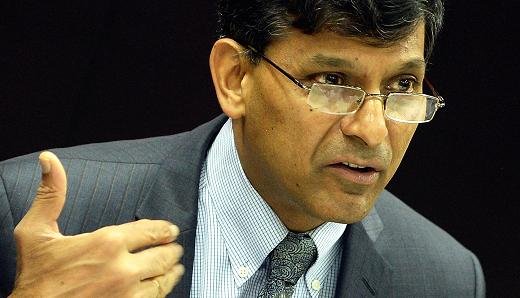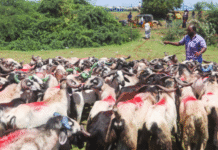Mumbai– Reserve Bank of India (RBI) Governor Raghuram Rajan kept key policy rates unchanged in his last monetary policy review on Tuesday with little elbow room for easing due to the country’s retail inflation inching closer to the upper tolerance level of 6 percent.
The repurchase (repo) rate, or the interest commercial banks pay the central bank for short-term loans, remains unchanged at 6.5 per cent. The cash reserve ratio (CRR) that scheduled banks have to keep in liquid funds also remains unaltered at 4 per cent of deposits.
In the previous policy update, too, conducted on June 7, the policy rates were left unaltered.
“Recent sharper-than-anticipated increase in food prices has pushed up the projected trajectory of inflation over the rest of the year,” Rajan said. Strong improvement in sowing on the back of good monsoon rains and supply-side management auger well for food inflation outlook, he added.
“In view of this configuration of risks, it’s appropriate for the Reserve Bank to keep the policy repo rate unchanged at this juncture, while awaiting space for action. The stance of monetary policy remains accommodative and will continue to emphasise adequate provision of liquidity.”

Rajan also said easy liquidity conditions are now prompting banks to modestly transmit the past policy rate cuts of the central bank on to customers and that pro-active liquidity management by them should facilitate more such pass-through.
The stock markets, which had opened on a positive note on Tuesday, soon started edging lower as the time for policy update drew nearer. Once it was made known that the policy rates have been left unchanged, the markets took a sharp dip. But they recovered some ground eventually.
The sensitive index (Sensex) of the BSE had opened nearly 110 points, or 3.8 percent up, but soon fell into the negative zone. At 11 a.m, when the policy was announced, it fell nearly 85 points, but recovered ground immediately. An hour later, it was 56.01 points, or 0.20 per cent down.
Tuesday’s policy update will also be the last one that will afford the central bank governor the liberty to fix policy rates, with the government set to entrust such a task with a soon-to-be-constituted Monetary Policy Committee, facilitated by amending the statute.
The target inflation rate has already been set at 4 percent — plus or minus 2 percentage points. Against this, the central bank retained the inflation projection of 5 per cent by March 2017 with risks tilted to the upside.
On growth, Rajan said the momentum was expected to be quickened by the normal monsoon that should raise agricultural output and rural demand. A stimulus to consumption spending was also expected on account of the Pay Commission award.
“The passage of the Goods and Services Tax (GST) bill also augurs well for the growing political consensus for economic reforms,” he said, but added timely implementation will be challenging. On the whole, he said, this new tax regime should boost government finances and investor mood.
Since January 2015, when the central bank started seeing improvement in the economy and external factors, the short-term lending rate has been cut by 150 basis points — the last one on April 5 of 25 basis points. During his tenure, Rajan has raised the rates thrice and cut them five times.






